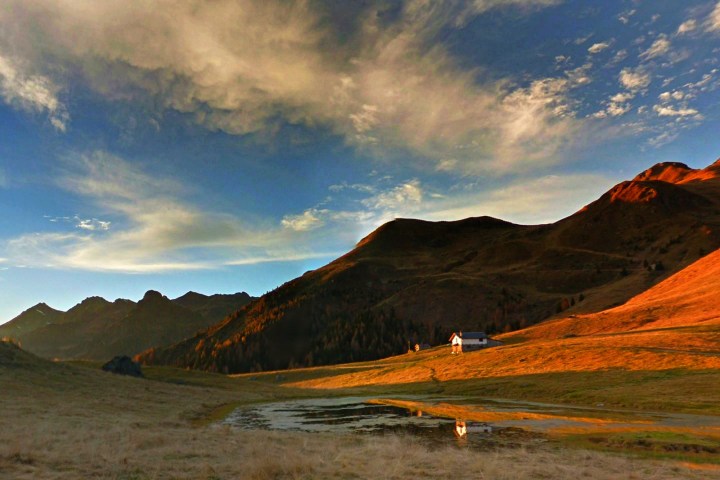
Along those lines, Google’s Research Lab on Thursday published the results of an experimental deep-learning program called Creatism to explore whether or not an artificially intelligent computer can make subjective art.
“Machine learning excels in many areas with well-defined goals,” researchers Hui Fang and Meng Zhang wrote. “However, a clear goal is usually not available in art forms, such as photography. The success of a photograph is measured by its aesthetic value, a very subjective concept.”
For the experiment, Google used a large set of images the tech giant already has access to — the footage from Google Street View cars. The computer was asked to first “compose” the image — or crop a view from the wide range of available data from the Street View cameras. Google says the computer “traveled” through about 40,000 panoramas in several locations for landscape photography, including the Alps, California’s Big Sur, Yellowstone, and Canada’s Banff and Jasper national parks.
After cropping from 360 panoramas, the program was then asked to edit the images, with the goal of ending up with a professional- or semiprofessional-quality image. The program applied digital filters, but perhaps even more importantly, edited images using what Google describes as “content-aware” lighting adjustments. Unlike adjusting the exposure of the entire image all at once or using a shape like a vignette, that means the program was able to selectively edit specific areas of the image.
The program then rated each final image, predicting how close that image comes to an actual pro shot. When Google presented what the computer thought were the best results to actual human photographers, the group rated 40 percent of the program’s top picks as being either professional or semiprofessional quality.
So how did Google create a program that could take straightforward 360 panoramas and turn them — or at least some of them — into what looks like a piece of wall art? The team of researchers fed the program a collection of professional photos, but didn’t include any before or after results and also didn’t add any text labels. Instead, the researchers paired each image with the same shot, but edited with a random filter designed to degrade the quality in some way. By telling the computer that those degraded images were bad, the system learned how to both recognize a good composition and create automatic, yet image-specific edits to improve the shot’s color and light.
Google says the software was an experiment to see if artificial intelligence programs could pick up on subjective concepts. And while the program used Street View images, Google says that “this technique might even help you to take better photos in the real world.”
Along with publishing the results in an academic paper, the researchers compiled an online gallery of the best Creatism shots, pairing each edited shot with the original Street View image.
Creatism joins the growing list of artificially intelligent photography software, from gadgets that give a DSLR an AI-powered auto to programs that determine how awesome a photo is and actually editing the photos.




